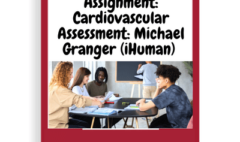PGBM18 – Discursive Essay on International Human Resource Management
March 8, 2022 2022-03-08 17:45PGBM18 – Discursive Essay on International Human Resource Management

PGBM18 – Discursive Essay on International Human Resource Management
| Module Code: | PGBM18 | ||
| Module Title: | International Human Resource Management | ||
| Assessment | First Sit S | Hand in Date: |
Hi there! I’m Tutor Peter. Need support with this course? Get in touch now! I have been helping graduate students with coursework for 7 years now! Guaranteed personalised service!
Find the sample essay to these instructions HERE.
Instructions on Assessment:
With reference to appropriate models, theories, frameworks and academic literature, you are to required to select two of the following essay titles, one from Box A and one from Box B and provide an answer in the form of a discursive essay in not more than 1500 words for each title [3000 words in total].
The pieces of work are equally weighted at 50% of the overall mark. Note that you should not include any appendices in your finished piece of work.
| Box A 1. Assess the extent to which national governments influence the role and effectiveness of international human resource management policies and practices. 2. Explain the concepts of convergence and divergence. Provide examples, particularly from your own country context, of HR practices which are (a) become more similar across the world and (b) remain distinctive. 3. What is the relationship of national culture to human resource management? |
| Box B 1. How does national culture affect the selection process? Give some examples of the different selection processes that are used in three countries and explain why these differences occur. 2. Thinking of a multinational organisation that plans to transfer its employment relations practices to its overseas subsidiaries, why might it find that they are implemented in full in some countries, partially in others, and not at all in others. (Edwards et al., 2007:215). 3. How can the consistency of international compensation across international locations be achieved when local environments differ? |
Word limits for assignments
The word count is to be declared on the front page of your assignment. The word count does not include:
| · Title and Contents page | · Reference list | · Appendices | · Appropriate tables, figures and illustrations |
| · Glossary | · Bibliography | · Quotes from interviews and focus groups. |
Please note, in text citations [e.g. (Smith, 2011)] and direct secondary quotations [e.g. “dib-dab nonsense analysis” (Smith, 2011 p.123)] are INCLUDED in the word count.
Summarising and compressing the information in your assignment into the word limit is one of the skills that students are expected to acquire, and demonstrate as part of the assignment process.
Submission of Assessment:
All assignments must be submitted via the Turnitin Dropbox only by 23:59 on the hand-in date notified at the beginning of this brief. It is advisable to retain a copy of your assignment for you own records. Your mark and feedback will be made available to you electronically once the internal moderation process has taken place, you should note that at this stage marks are still subject to external examiner and academic board approval.
Referencing your work:
In this institution the Harvard method of referencing is used.
The Harvard method of referring to publications and of arranging references uses the author’s name and the date of the publication. References are listed at the end of the text in alphabetical order by author’s name. The general format of a journal reference is shown below:
Smith, J. (1999) How to succeed! Journal of Entrepreneurs , 1(2), p. 34-56
Author’s name and initials are listed first, followed by year of publication in brackets. Then there is the title of article and the journal where article appears, which is underlined or in italics. Finally, state the volume and issue Number (in brackets) along with the pages where article can be located.
A short guide to Harvard referencing will also be available on the Sunspace site under the module assessment navigation button.
Academic Integrity and Misconduct:
Your attention is drawn to the University’s stated position on plagiarism. THE WORK OF OTHERS, WHICH IS INCLUDED IN THE ASSIGNMENT MUST BE ATTRIBUTED TO ITS SOURCE (a full bibliography and/or a list of references must be submitted as prescribed in the assessment brief).
Please note that this is intended to be an individual piece of work. Action will be taken where a student is suspected of having cheated or engaged in any dishonest practice. Students are referred to the University regulations on plagiarism and other forms of academic irregularity. Students must not copy or collude with one another or present any information that they themselves have not generated.
(Some basic instruction if required here)
For further information on academic integrity and misconduct see https://docushare.sunderland.ac.uk/docushare/dsweb/View/Collections-8155
Generic Assessment Criteria
Generic Assessment Criteria – Postgraduate
These should be interpreted according to the level at which you are working
| Categories | ||||||||
| Grade | Relevance | Knowledge | Analysis | Argument and Structure | Critical Evaluation | Presentation | Reference to Literature | |
| Pass | 86 – 100% | The work examined is exemplary and provides clear evidence of a complete grasp of the knowledge, understanding and skills appropriate to the Level of the qualification. There is also unequivocal evidence showing that all the learning outcomes and responsibilities appropriate to that Level are fully satisfied. At this level it is expected that the work will be exemplary in all the categories cited above. It will demonstrate a particularly compelling evaluation, originality, and elegance of argument, interpretation or discourse. | ||||||
| 76-85% | The work examined is excellent and demonstrates comprehensive knowledge, understanding and skills appropriate to the Level of the qualification. There is also excellent evidence showing that all the learning outcomes and responsibilities appropriate to that level are fully satisfied. At this level it is expected that the work will be excellent in the majority of the categories cited above or by demonstrating particularly compelling evaluation and elegance of argument, interpretation or discourse and some evidence of originality. | |||||||
| 70 – 75% | The work examined is of a high standard and there is evidence of comprehensive knowledge, understanding and skills appropriate to the Level of the qualification. There is clearly articulated evidence demonstrating that all the learning outcomes and responsibilities appropriate to that level are satisfied At this level it is expected that the standard of the work will be high in the majority of the categories cited above or by demonstrating particularly compelling evaluation and elegance of argument, interpretation or discourse. | |||||||
| 60 – 69% | Directly relevant to the requirements of the assessment | A substantial knowledge of relevant material, showing a clear grasp of themes, questions and issues therein | Comprehensive analysis – clear and orderly presentation | Well supported, focussed argument which is clear and logically structured. | Contains distinctive or independent thinking; and begins to formulate an independent position in relation to theory and/or practice. | Well written, with standard spelling and grammar, in a readable style with acceptable format | Critical appraisal of up-to-date and/or appropriate literature. Recognition of different perspectives. Very good use of a wide range of sophisticated source material. | |
| 50 – 59% | Some attempt to address the requirements of the assessment: may drift away from this in less focused passages | Adequate knowledge of a fair range of relevant material, with intermittent evidence of an appreciation of its significance | Significant analytical treatment which has a clear purpose | Generally coherent and logically structured, using an appropriate mode of argument and/or theoretical mode(s) | May contain some distinctive or independent thinking; may begin to formulate an independent position in relation to theory and/or practice. | Competently written, with only minor lapses from standard grammar, with acceptable format | Uses a good variety of literature which includes recent texts and/or appropriate literature, including a substantive amount beyond library texts. Competent use of source material. | |
| 40 – 49% | Some correlation with the requirements of the assessment but there are instances of irrelevance | Basic understanding of the subject but addressing a limited range of material | Some analytical treatment, but may be prone to description, or to narrative, which lacks clear analytical purpose | Some attempt to construct a coherent argument, but may suffer loss of focus and consistency, with issues at stake stated only vaguely, or theoretical mode(s) couched in simplistic terms | Sound work which expresses a coherent position only in broad terms and in uncritical conformity to one or more standard views of the topic | A simple basic style but with significant deficiencies in expression or format that may pose obstacles for the reader | Evidence of use of appropriate literature which goes beyond that referred to by the tutor. Frequently only uses a single source to support a point. | |
| Fail | 35 – 39% | Relevance to the requirements of the assessment may be very intermittent, and may be reduced to its vaguest and least challenging terms | A limited understanding of a narrow range of material | Largely descriptive or narrative, with little evidence of analysis | A basic argument is evident, but mainly supported by assertion and there may be a lack of clarity and coherence | Some evidence of a view starting to be formed but mainly derivative. | Numerous deficiencies in expression and presentation; the writer may achieve clarity (if at all) only by using a simplistic or repetitious style | Barely adequate use of literature. Over reliance on material provided by the tutor. |
| The evidence provided shows that the majority of the learning outcomes and responsibilities appropriate to that Level are satisfied – for compensation consideration. | ||||||||
| 30 – 34% | The work examined provides insufficient evidence of the knowledge, understanding and skills appropriate to the Level of the qualification. The evidence provided shows that some of the learning outcomes and responsibilities appropriate to that Level are satisfied. The work will be weak in some of the indicators. | |||||||
| 15-29% | The work examined is unacceptable and provides little evidence of the knowledge, understanding and skills appropriate to the Level of the qualification. The evidence shows that few of the learning outcomes and responsibilities appropriate to that Level are satisfied. The work will be weak in several of the indicators. | |||||||
| 0-14% | The work examined is unacceptable and provides almost no evidence of the knowledge, understanding and skills appropriate to the Level of the qualification. The evidence fails to show that any of the learning outcomes and responsibilities appropriate to that Level are satisfied. The work will be weak in the majority or all of the indicators. |
Module Specific Criteria
| Trait | 0 Fail | 1 – 39 Fail | 40-49 Pass | 50– 59 Pass | 60 – 69 Commendation | 70 – 100 Distinction |
| Knowledge and Understanding | Work not submitted OR Work giving evidence of serious academic misconduct OR Work showing no evidence of the knowledge, understanding and skills appropriate to level 4. None of the learning outcomes are met. | Work is not acceptable and provides little evidence of the knowledge, understanding and skills appropriate to level 4. Few of the learning outcomes are met. | Adequate work providing evidence of the knowledge, understanding and skills appropriate to level 4 but only at a bare pass level. All learning outcomes are met (or nearly met and balanced by strengths elsewhere). | Satisfactory work providing evidence of the knowledge, understanding and skills appropriate to level 4. All learning outcomes are met. | Commendable work providing evidence to a high level of the knowledge, understanding and skills appropriate to level 4. All learning outcomes met, many are more than satisfied. | Excellent work providing evidence to a very high level of the knowledge, understanding and skills appropriate to level 4. All learning outcomes met, many at high level. Marks at the high end of this range indicate outstanding work where all learning outcomes are met at a high level. |
| Structure, Alignment, Argument and Research | Inadequate in some of the following aspects or seriously inadequate in at least one: use of relevant material; development of analysis and structure of argument; evaluation of theory; application of relevant theory, research methods and findings to the problem in question; presentation of information to the intended audience. | Adequate in all of (or most of, with balancing strength elsewhere): use of relevant material; development of analysis and structure of argument; evaluation of theory; application of relevant theory, research methods and findings to the problem in question; presentation of information to the intended audience. | Satisfactory in all or most of: use of relevant material from a variety of sources; development of analysis and structure of argument; evaluation of theory; application of relevant theory, research methods and findings to the problem in question; presentation of information to the intended audience. | Good in all or most of: use of up-to-date material from a variety of sources; development of analysis and structure of argument; critical evaluation of relevant theory, research methods and findings to the problem in question; presentation of information to the intended audience. | Excellent in all or most of: use of primary sources of literature from a range of perspectives; development of analysis and structure of argument; critical evaluation and creative use of theory, research methods and findings; presentation of information to the intended audience. |

![[Solved] ENGL147N - Week 7 Assignment- Final Draft of the Argument Research Paper](https://prolifictutors.com/wp-content/uploads/2023/01/Solved-ENGL147N-Week-7-Assignment-Final-Draft-of-the-Argument-Research-Paper--240x142.png)
![[Solution] - NR305 - Week 3 Discussion: Debriefing of the Week 2 iHuman Wellness Assignment (Graded](https://prolifictutors.com/wp-content/uploads/2022/06/Best-Answer-NR305-Week-3-Discussion-Debriefing-of-the-Week-2-iHuman-Wellness-Assignment-Graded--240x142.png)

![[Best Answer] NR305 - Week 2 Discussion: Reflection on the Nurse’s Role in Health Assessment (Graded)](https://prolifictutors.com/wp-content/uploads/2022/06/Best-Answer-NR305-Week-2-Discussion-Reflection-on-the-Nurses-Role-in-Health-Assessment-Graded-240x142.png)
![[Best Answer] NR305 - Week 2 Assignment: Wellness Assessment: Luciana Gonzalez (iHuman) (Graded)](https://prolifictutors.com/wp-content/uploads/2022/06/Best-Answer-NR305-Week-2-Assignment-Wellness-Assessment-Luciana-Gonzalez-iHuman-Graded--240x142.png)

